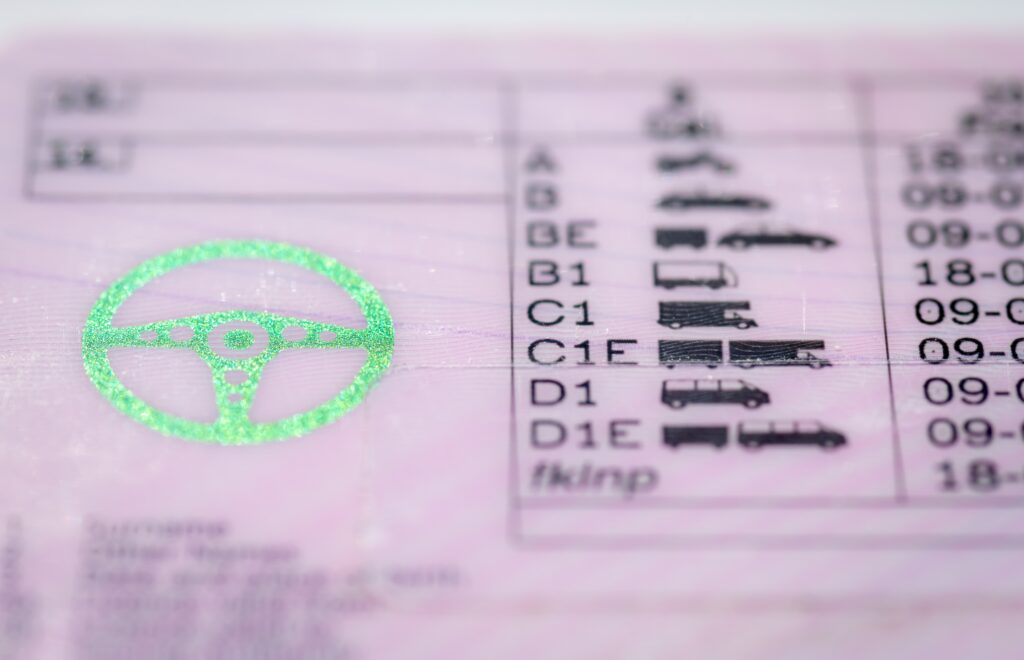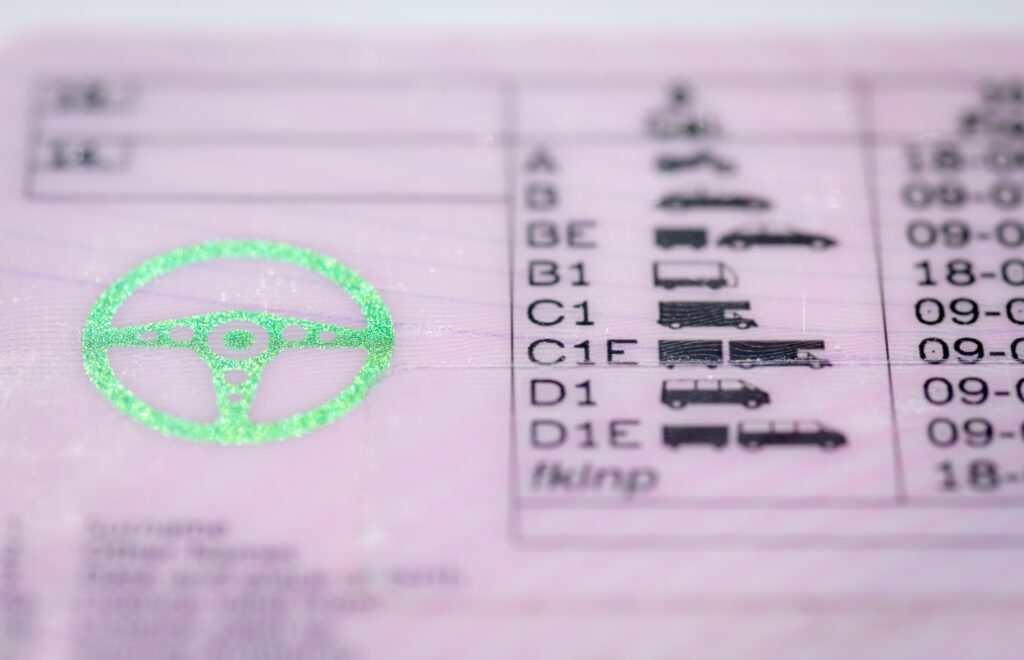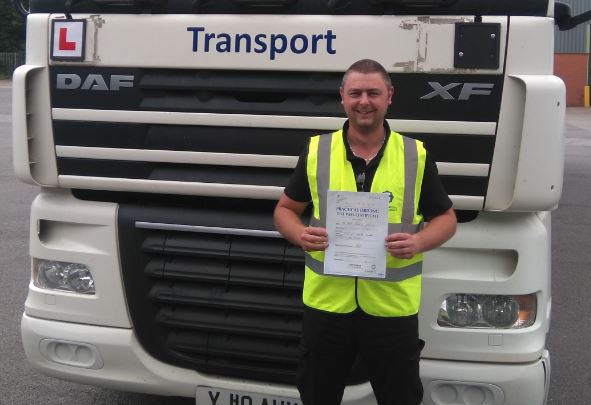As the first major step in your HGV training, passing the HGV theory test the first time will be an excellent confidence boost and save you time and money.
But what is the HGV theory test and what does it involve?
Read on to find out from the HGV driver training experts at HGVTN.
What is the HGV theory test?
The HGV theory test is an assessment you must undertake to prove you have the required working knowledge of HGVs (and the roads in general) to drive them safely.
Not dissimilar to the theory test you will have taken when learning to drive standard cars, you’ll be required to revise well beforehand and then put your knowledge into practice during the test.
If you pass both your HGV theory test and your HGV practical test (including acquiring all relevant paperwork and qualifications) you’ll be able to drive HGVs legally and use these newfound skills to pursue a career as an HGV driver.
What does the HGV theory test involve?
Your HGV driver theory training is very similar to the theory test you may have taken for your car driving test. You can apply for it as soon as you get your provisional licence.
It is made up of two parts, a multiple choice theory test section and a hazard perception test section, both of which are completed as on-screen tests in a DVSA test centre.
If you are pushed for time, you can take both sections on separate days, in any order – as long as you complete both parts within 2 years of each other.
It is important to note that while you can complete your theory and practical training at the same time, this is not necessarily recommended as it can:
· Increase the amount of time it takes to gain your theory certificate.
· Give you lots of things to do at once – making it harder to focus on learning the theory and practical skills.

How do I study for the HGV theory test?
Similarly to a standard driving theory test, you can revise for your HGV theory test from the comfort of your own home, or anywhere you choose, as long as you have the correct learning materials and a device to view them on (if you’re viewing digital content).
The DVSA has an official theory test kit for drivers of heavy goods vehicles, in which you will find examples of both sections of the theory test, including an impressive 130 interactive hazard perception test clips. This can be purchased through the official DVSA website.
Alternatively, you’re also able to buy books that can aid your studies, including copies of the official highway code, an official guide to driving goods vehicles, traffic sign quiz books, and much more to ensure you’re fully equipped to handle any questions that are thrown at you.
There are also plenty of free online resources and practice tests you can take advantage of to give yourself the best shot at passing the real test on the first try. Video examples of hazard perception test scenarios are excellent ways to train your brain to spot hazards early.
Best ways to study for the HGV theory test
In the weeks leading up to your HGV theory test, you should try and set aside time (an hour is usually a great start, if not longer) every day to take mock tests and allow your mind to soak up all the information it needs to pass.
Your environment is also important during this revision time. If you are in a noisy or crowded environment, it can be easy to become distracted, meaning you won’t be fully focused on learning answers to the questions you need to pass the HGV theory test. On top of this, accurately keeping track of oncoming hazards during a practice hazard perception test would be near impossible.
Try to find a quiet space where you won’t be disturbed – wear headphones if it helps you keep your eyes on your revision – and dedicate yourself exclusively to revising for your theory test. The effort you put in here will help you reap the rewards later.

Multiple choice questions
There are 100 multiple-choice questions and you will have 1 hour and 15 minutes to answer them all – but you don’t have to use all of this time.
You’ll read the question carefully and select one answer by pressing the touchscreen or using the mouse. You won’t see on-screen if the answer is correct or not, as it will just move on to the next question.
If you get to a question you aren’t sure about, you can ‘flag’ it by choosing the flag option at the top of the screen and come back to the flagged questions at the end – giving you a bit longer to work out the answer.
Similarly, you can also go back to any previous questions and change your answers at any time before you finish the test.
To pass this section successfully, you will need to score at least 85 out of 100.
Hazard perception test
Before this section of the test starts, you’ll see a video explaining how the system works – but if you practice with hazard perception test clips, it will be much the same.
You’ll see 19 CGI clips that feature everyday scenes of roadways in the UK – mimicking what you may see while out driving – and have 60 minutes to complete the test.
Each clip will include 1 developing hazard that you need to identify, and one clip will feature 2 hazards. The sooner you spot the hazards, the more points you will get, with a range of 0-5 possible points per clip.
The DVSA defines a developing hazard as ‘something that would cause you to take action, like changing speed or direction.’ important in ensuring driver safety.
When you click, a small red flag will appear at the bottom of the screen, marking your response while the clip continues.
You will not lose points for clicking at an incorrect time, but you must not click continuously or in a pattern as this will be viewed as an attempt at cheating and you will score 0 for that clip.
You also will not be able to go back and redo any of the clips. Not to worry though, if you miss a few clips or only spot the hazard very late– you can still get enough points to pass, so try to start with a clean slate for every clip and stay calm.
To pass this section, you will need to score a minimum of 67 out of 100.
What is the pass mark for the HGV theory test?
To pass the multiple choice section of your HGV theory test successfully, you will need to score at least 85 out of 100.
To pass the hazard perception test section of your HGV theory test, you will need to score a minimum of 67 out of 100.
How many questions are in the HGV theory test?
You’ll be given 100 multiple-choice questions in your HGV theory test and will be shown a total of 19 clips in the hazard perception part of your test.
A maximum score in the multiple choice is 100/100. However, even though there are only 19 clips in the hazard perception section, this is also scored out of 100, with scores being determined by your ability to spot hazards in good time.
How long does the HGV theory test take?
In total, you will be given 2 hours to complete both sections of your HGV theory test – with 1 hour and 15 minutes allotted to your multiple choice questions and the remaining 45 minutes to your hazard perception test. But you don’t need to use all of this time if you don’t need to. Learn more about the length of the HGV test.

What to take with you for your test?
On test day, you will need to take one of the following:
· A Great Britain photocard driving licence
· A Northern Ireland photocard driving licence (and paper counterpart)
· An EU photocard driving licence (and paper counterpart if you have one)
If you don’t have a photocard driving licence, you should bring your paper licence and a valid passport instead – if you don’t bring these documents, you will not be able to attempt your theory test and will need to pay for another. Read our blog for more information on the HGV license requirements.
You should also bring a bottle of water and make sure you have had a good meal to help you concentrate.
You shouldn’t take anything except your ID, your locker key, and a bottle of water into the room with you – you can store everything else in the lockers provided.
*DID YOU KNOW?
HGV Training Network has incredibly high pass rates for all courses and immediate starts available for all LGV or HGV driver training – allowing you to get out on the open road sooner rather than later.*
What is the procedure for test day?
Test day is much the same for everyone. While there are DVSA staff there to help you, it can be reassuring to know what to expect.
Once you arrive at the test centre, you will stow away your belongings in a locker. You will need to take your ID, key, and water with you, ensuring your phone is turned off and locked away. There will be toilet facilities available and it’s best to use these before you go in.
You will then move to the main waiting space and check in, showing your ID and signing a declaration ready to take your test. After, you’ll wait in the waiting room before you are called in by name and shown to the computer room for the test.
Once in the computer room, you will be asked to empty your pockets and DVSA staff will check your ears for hidden communication devices, ensuring people can’t cheat during the test. They will then recap the rules of the tests and show you to your computer station.
You will then take the test. If you pass, you will be presented with your theory test certificate as proof of your achievement.
*Want to know more about the HGV theory test? Got questions about HGV driving overall? Simply get in touch with HGV Training Network today and one of our expert team members will be in touch to answer any questions you have.*

Do I need training before the HGV theory test?
Technically, you do not need to undergo any formal HGV training before undertaking your HGV theory test – revising with the available materials and practicing using example hazard perception test videos or software will give you all the tools you need to pass.
However, some active knowledge of HGVs and driving HGVs will only aid you in your theory test attempts, which is why it’s always recommended to have undergone some physical HGV training before taking your theory test. But you will need to have passed your HGV theory test before taking your practical test.
How to book the HGV theory test
When you’re confident that you’re ready to tackle your HGV theory test and you’ve put in a solid amount of revision in the weeks beforehand, you can head to the GOV.UK website to book your HGV theory test.
At this booking portal you’re also able to book tests for other kinds of vehicles, including standard cars, so be sure to choose the correct test when booking.
If you’ve already begun your practical training and need some advice on when to book your theory test, your instructor will be more than happy to advise.
Why do you need the HGV theory test?
The HGV theory test, much like standard car theory tests, is a legal requirement if you wish to drive HGVs, and is your opportunity to prove you’re able to not only understand but react to instances you will encounter when out on the road.
The knowledge you present in your HGV theory test (or lack of knowledge, if you fail) is a clear indicator of how effective – or ineffective – you would be when in command of an HGV. In failing the HGV theory test, you’ll be proving you’re not yet ready to get behind the wheel of a much larger vehicle and will need to retake the test after more revision and practice tests.

Where can you do the HGV theory test?
Luckily, you’re able to complete your HGV theory test at the same theory test centres as you would complete a standard car theory test. If you have already begun your HGV training or studies, your instructor may be able to advise you where the best place is for you to complete your HGV theory test, depending on your location. But should you need an extra hand, there is a handy tool on the GOV.UK website that lets you search out a local theory test centre based on your postcode – you can check that out here. Just be sure to specify which theory test you need to take before booking your slot.
Do I need IT skills to pass the HGV theory test?
Even though the HGV theory test is completed on a computer, you don’t necessarily need any serious IT skills to complete and pass your test. As long as you can use a mouse and check the right boxes in your multiple-choice test, and click at the appropriate time during your HGV hazard perception test, you’ll be fine. However, if you feel as though your IT skills are not up to this standard for whatever reason and you may need extra help completing your test, let your chosen test centre know either through your test application or by contacting them directly. They may be able to make some arrangements that will help you complete your test within the allocated time.
How many times can you take the HGV theory test?
Much like your car theory test, you are allowed to retake your HGV theory test as many times as you need to in order to pass. If you fail a HGV theory test, you will be given the option to try again and accept a date and time slot some time in the future. You can opt to take the nearest available slot, or take more time for your studies and book another test whenever it suits you. While passing the first time is ideal, many people take several attempts to pass their theory test and still go on to become excellent drivers, so do not be disheartened if you do not achieve an ideal mark the first time around.

How much does the HGV theory test cost?
At the time of writing, these are the current prices for both parts of the HGV theory test:
- Part 1a (multiple-choice questions) – £26
- Part 1b (hazard perception) – £11
This is payable when you book your theory test through the GOV.UK website. If you need to retake your HGV theory test, it will cost you the same price per attempt, unless the price increases between attempts.
Does the HGV theory test expire?
Similarly to the standard car theory test, you will have 2 years from the time of passing your HGV theory test to pass your practical test. However, unlike passing your standard car practical test, HGV drivers will also need to achieve their CPC certificate. If you are unable to pass the CPC test within two years of passing your multiple choice and hazard perception theory tests, you’ll need to complete these again to progress and take your practical exam.
HGVTN top test tips
It is very important that you don’t leave anything in your pockets or try to wear earphones before you go through to take your test, so ensure you check before you close your locker.
DVSA staff cannot help you with any aspect of the test, but they can help if you are struggling with controls, so just raise your hand if you need help using the computer.
Book your tests and get started with revision nice and early so you don’t feel under pressure or stressed.
Utilise a mix of online and offline revision and be sure to check out the following DVSA books, which will correspond with the questions asked.
· The Highway Code
· Know your traffic signs
· The Official DVSA Guide to Driving Goods Vehicles or The Official DVSA Guide to Driving Buses and Coaches (depending on your chosen career)
Get test ready with HGVTN
Every learner who signs up with HGVTN will have access to free online theory practice software, designed to ensure you pass first time. This is completed on a smartphone, tablet, or computer, so will also build up your familiarity with the mechanics of the test, helping you to feel more relaxed on the day.
Find your nearest HGV training location or view our HGV training finance options to learn more and get started today.
For more information, or to start your HGV training journey, reach out to us today. You can call us on 0800 254 5007, email us at contact@hgvtrainingnetwork.com, or fill out our quick enquiry form and we’ll get back to you as soon as we can.
























